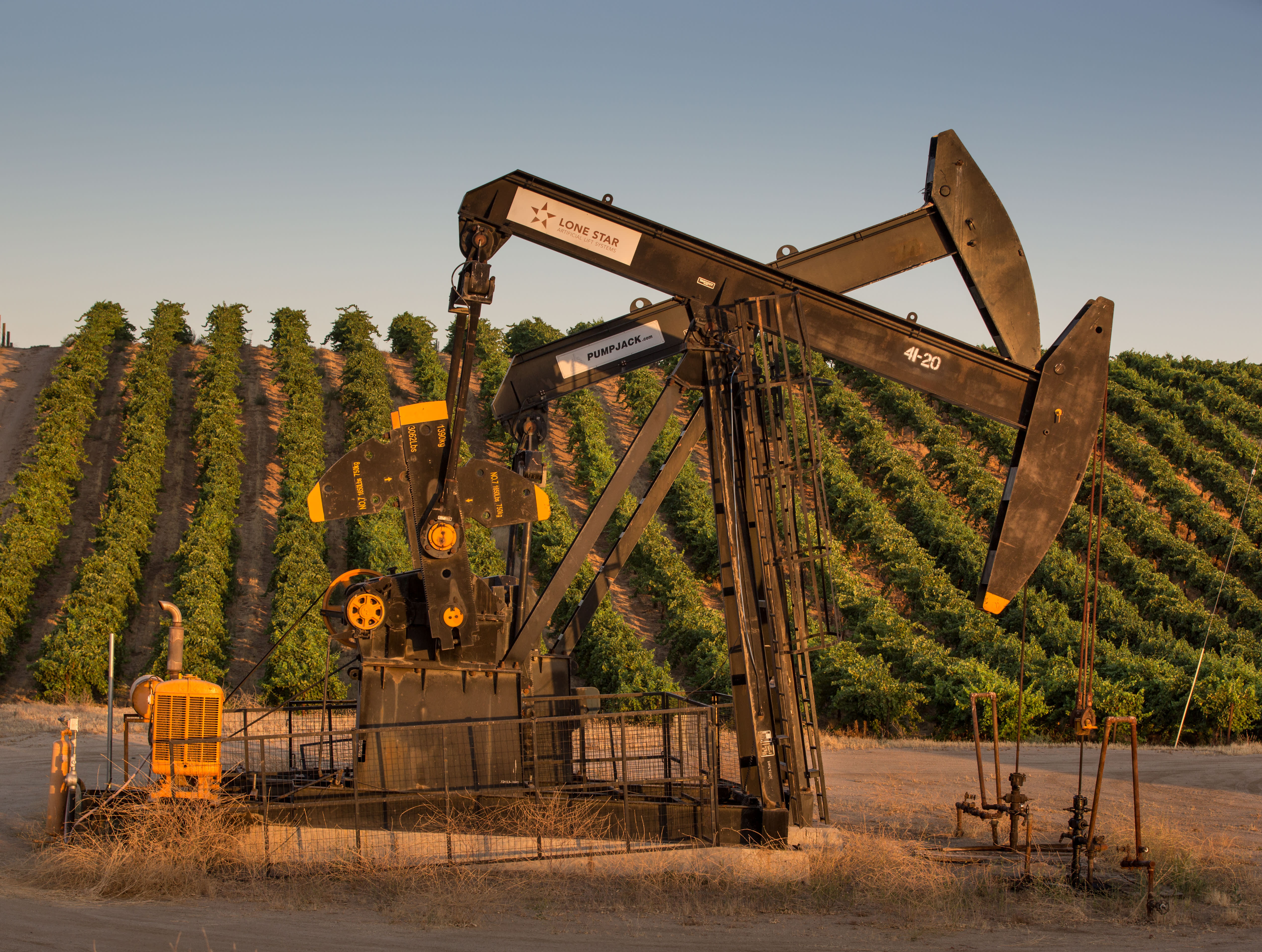
Oil pumping rigs are situated next to a vineyard of table grapes as viewed on July 8, 2021, north of Bakersfield, California.
George Rose | Getty Images
The Organization of the Petroleum Exporting Countries rolled out an opus — its “World Oil Outlook 2045.”
Clocking in at a Texas-sized 340 pages, it’s not the easiest of reads, but helpfully the good folks in Vienna tossed us a 30-page Executive Summary as well as an interactive edition.
Whatever OPEC says about oil, oil demand, the future of cars and everything else fossil fuel-related is going to be discounted, if not openly mocked, given that the organization is one of petroleum-exporting countries. It’s not the renewables-exporting countries, although OREC has a certain ring.
Still, the group and its researchers did a great job of putting together a lot of data, information and projections in Tuesday’s report. During my trips to OPEC headquarters in Austria, I’ve gotten to know some of the women and men who put this together. They aren’t oil roughnecks, but studious academic types working in a well-stocked library. They are more pragmatic than one might think for an advocacy organization.
There’s a ton of stuff to discuss and debate in the 2045 Outlook, but here are the five things that stuck out most to me.
1. Oil is far from dead
A projection that oil and fossil fuels will live on — put out by an oil and fossil fuel organization — is the least surprising thing you’ll see all year. But feigned shock aside, OPEC’s global population growth projections are hard to ignore when it comes to a global energy mix in years and decades ahead. Their base case is that global oil demand will rise until 2045. And before you bash them, keep in mind there are plenty of Wall Street firms with projections that aren’t that far off.
Here’s what OPEC is forecasting for oil demand:
“Global primary energy demand is expected to increase by 28% in the period between 2020 and 2045, with all energies required, driven by an expected doubling in size of the global economy and the addition of around 1.7 billion people worldwide by 2045. All energies witness growth, with the exception of coal. Renewables see the largest growth, followed by gas, but oil is still expected to retain its number one position in the energy mix.”
2. It’s not ‘U.S.’ It’s the world
We can scoff at that projection all we want as we tweet from our new iPhones in a comfortable home, but OPEC reminds us that it is a big world out there. It’s getting bigger and growing in places that are not known as the United States or Western Europe. The growth will come from countries where electricity may still be substandard and a car — any car — is a valuable asset.
These are OPEC’s projections on global population growth:
“The global population is expected to reach 9.5 billion people by 2045. Future demographic trends are marked by an aging population, a rising working-age population and increases in urbanization and migration rates. The global working-age population (15–64) is projected to rise by around 900 million throughout the projection period.”
3. A renewables boom — sort of
The good news on the renewables side? Demand for “other renewables,” including wind and solar, is expected to jump. Yet even with this scenario, OPEC sees this as just over 10% of the global fuel source in 25 years. Coal keeps dropping, oil slumps a little and natural gas grows. Oh, and nuclear continues to get no love.
Here are OPEC’s findings on energy demand:
“Demand for other renewables is projected to expand from 6.8 mboe/d [million barrels of oil equivalent a day] in 2020 to 36.6 mboe/d in 2045, representing the single-largest incremental contribution to the future energy mix. Moreover, it is also the fastest-growing energy source with its share in the global primary energy mix above 10% in 2045, up from just 2.5% in 2020. This is driven by falling costs and policies focused on reducing emissions.”
4. Oil demand will be hit by electric vehicles, but maybe not as much as you think
There are so many optimistic projections around the growth of electric vehicle sales. And why not? When new cars like Rivian, Lucid or Ford’s electric F-150 truck are announced, they sell out quickly. There are many reasons to be bullish.
But to OPEC’s first point about where the growth will come from, you need to consider the world. Maybe as many as a billion people do not have access to reliable electricity (or clean drinking water for that matter). For hundreds of millions of families having a car — any car — is a life changer. And many of those cars will be low cost, internal combustion powered. At least that’s what OPEC projects. But note it still does see 500 million EVs by 2045, a pretty huge number.
OPEC detailed its expectations for vehicle demand:
“The total vehicle fleet is expected to reach 2.6 billion by 2045, increasing by around 1.1 billion from the 2020 level. EVs are set to approach 500 million by 2045, representing almost 20% of the global fleet. Some growth is also projected for natural gas vehicles (NGVs), with an expected increase of 80 million projected between 2020 and 2045. As a result, internal combustion engine (ICE) vehicles are set to maintain their leading role in the composition of the global fleet. The outlook sees ICEs constitute about 76% of the global vehicle population by 2045, largely sustained by the fleet size increase in developing regions.”
5. Texas (and maybe New Mexico) take off again
If you’re bullish on American oil production or oil producers, this one’s for you. OPEC sees a “return to growth” for fracking in the U.S. Though production gains have been muted for some time now, OPEC says we should start to see that change next year. By the way, New Mexico is now the No. 2 oil-producing state in the U.S., overtaking North Dakota, according to The Bismarck Tribune.
OPEC noted in its report:
“Supportive market fundamentals should incentivize a return to growth for U.S. tight oil production from 2022, which is expected to rise from 11.5 mb/d [millions of barrels per day] in 2020 to 14.8 mb/d in 2026. Tight oil output is expected to peak at 15.2 mb/d in the late 2020s, with U.S. total liquids hitting a maximum of around 20.5 mb/d around the same time.”
Those are my top five from the World Oil Outlook. Do I agree with some of the more optimistic projections? Frankly, no. But I also believe that global population growth is going to be so massive — particularly in non-OECD nations — that the global energy mix will remain more diverse than many other projections. Only time will tell.
You can access the OPEC website here.


